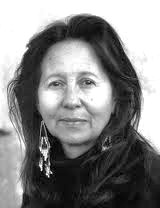The
Civil War History of the 57th Indiana
(#13 of 52)
The Battle of Perryville
“It was near 2 o’clock A.M. when I lay
down, and when I awoke, the morning sun was peering through the branches. On
looking up I discovered that the tree under which I slept so soundly was
interwoven with grape vines, and that the lower branches were covered with rich
clusters. Hastily rolling my blanket, I secured a number of the bunches and
then set out for the regiment. Along the route I partook of a breakfast of crackers
and grapes. Fortunately, we did not have to march until noon, and that gave
time to rest, and for those who were still behind to overtake their companies.“Before starting, Col. Hines called the company commanders together and told them that, when we left, there would be nine miles to water; and that to get it we should have to fight, as the enemy occupied the ground at that time. Canteens were all filled, and at noon we were all under way, fully impressed with the conviction that we were now about to fight “for water.”
“Upon reaching the line of battle, which was formed across the road, we filed to the left and marched some distance where we found a gap in our lines. We immediately went into line of battle, and there was still a vacancy of half a mile between Wagner’s brigade and the troops on our left. Just as we got into position the enemy were discovered by our skirmishers moving forward to penetrate the open space and overpower the troops on our left. Col. Wagner was ordered to take his brigade and battery, move with all possible haste, and occupy the hill which the enemy was then attempting to gain, and hold it.
“Again we were in motion - now no longer a march, nor double-quick - an actual race - to see which should first reach the hill. Keeping all but the line of skirmishers behind the ridge that rose between us and the advancing column of the enemy, we rushed forward to seize the position. Now the excitement of the field came on, without which we could not have been successful in the movement we were taking. It was a time of fearful suspense. One thing only could save us from a hard fight, and that was our success in gaining the position; for if the enemy gained it first, they could ruin our lines, unless driven from it.
“The enemy opened on us with a battery,
firing a few rounds of shell, but they were soon silenced when all the guns of
our battery were got into position. Our line moved forward just before dark,
and occupied the ridge which had been held by the rebels, they having withdrawn
beyond the reach of our guns. Here we found the knap-sacks of the 24th
Mississippi, which had been thrown aside preparatory to making a charge on the
hill. We learned from prisoners that the fire from Cox’s artillery made
considerable havoc in their ranks.
(Kentucky, October 8-9,
1862)
Excerpts taken from “Annals of the Fifty-Seventh Regiment,
Indiana Volunteer Infantry: Marches, Battles, and Incidents of Army Life”
written by Asbury L. Kerwood immediately after the war.





































